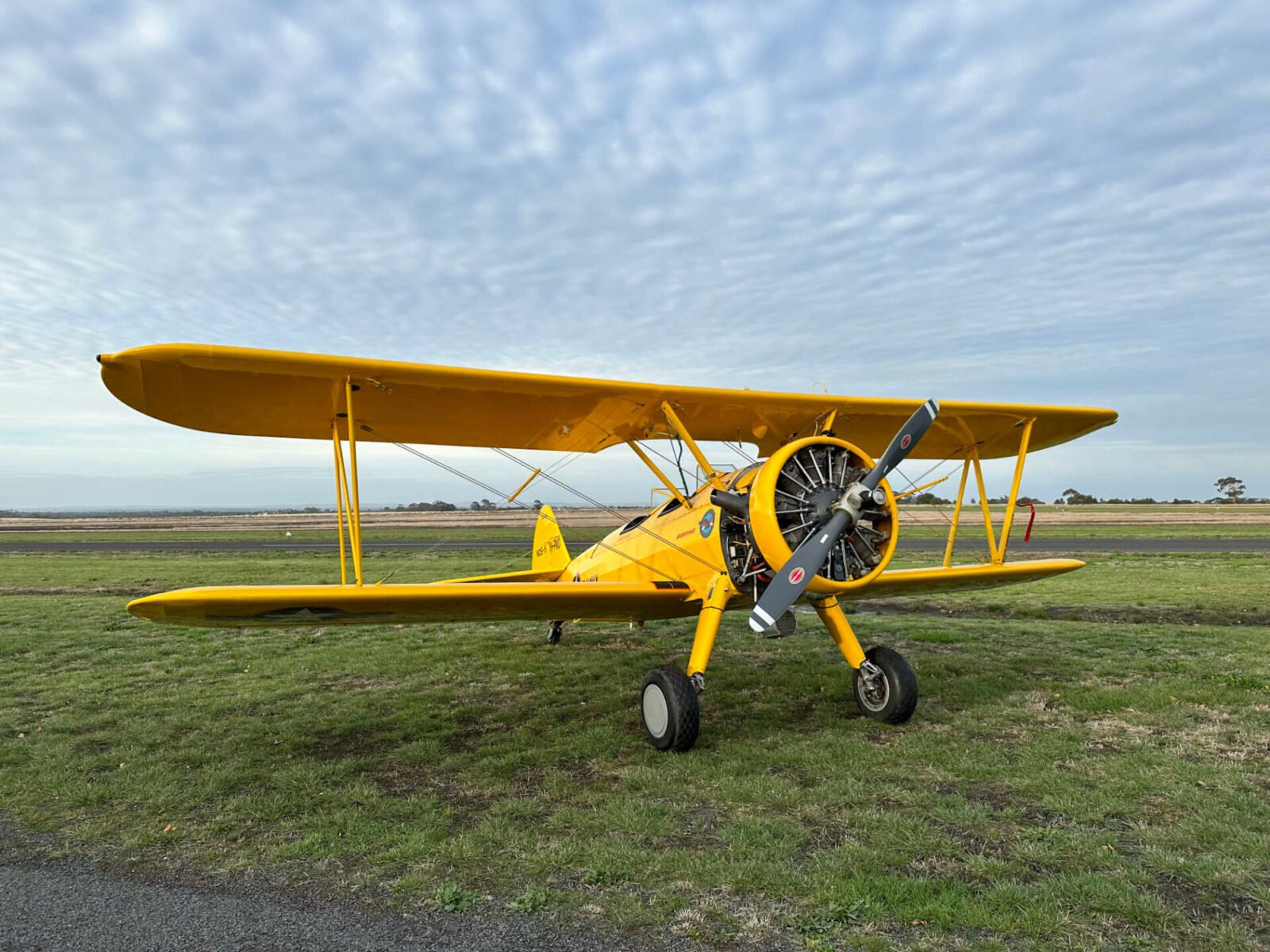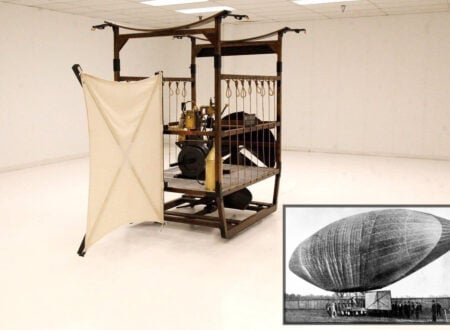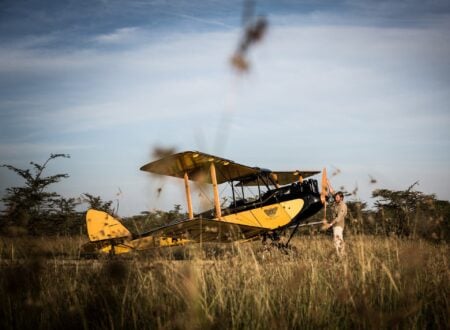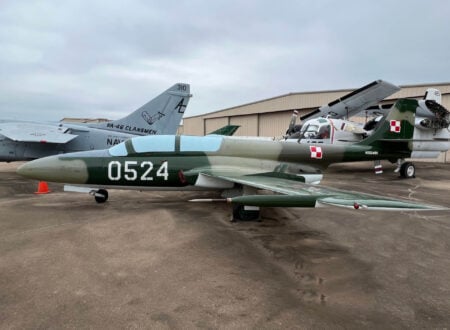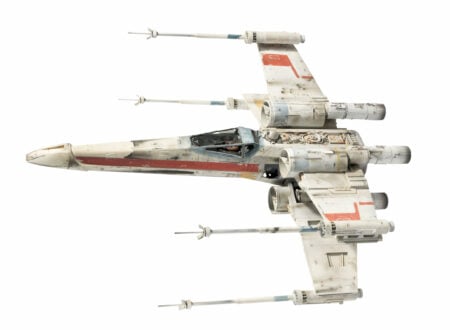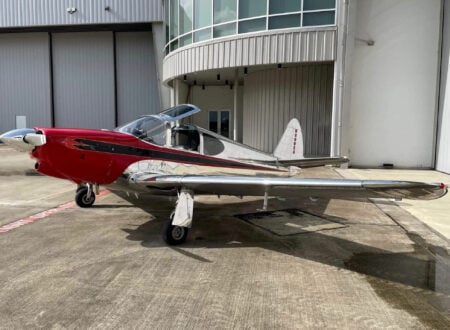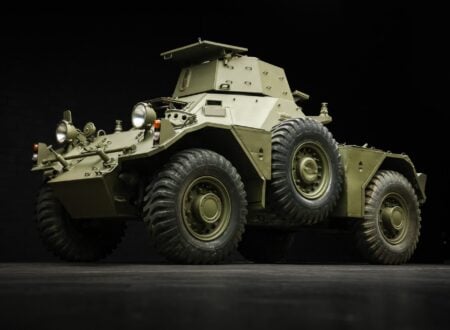This is a 1943 Boeing Stearman, it was built during the Second World War and used as a training aircraft for military pilots before being sold off as military surplus to a civilian owner after the war in 1945.
This particular aircraft was fully restored between the late 1990s and the year 2000 in Perth, Western Australia. Since that time it has accumulated just 89 flight hours and it’s now being offered for sale for $129,000 USD – representing an opportunity to buy an almost new Stearman that’s ready to fly at a price that’s downright affordable by warbird standards.
Fast Facts – The Boeing Stearman
- The Boeing Stearman traces its origins back to the Stearman Aircraft Company, founded by Lloyd Carlton Stearman in 1926. In 1934, Boeing acquired the company, the same year the Stearman Kaydet was released. This aircraft is better known now as the Boeing Stearman, but it’s also known as the Stearman Model 75.
- The Stearman Model 75 was designed by Harold S. “Pappy” Young, it featured a sturdy steel tube fuselage, a lightweight fabric-covered wooden wing structure, and an open cockpit arrangement with two pilots sitting in tandem, each with their own controls.
- During World War II, the Boeing Stearman was designated as the PT-13 Kaydet by the United States Army Air Corps and the N2S by the Navy. It served as a primary trainer for aspiring pilots, preparing them for combat missions. The Stearman’s durability and toughness made it an ideal training platform.
- The Stearman PT-13 Kaydet/N2S played a pivotal role in training thousands of pilots. It was used for basic flight training, aerobatics, instrument training, and target towing. Many pilots who trained on the Stearman went on to fly combat missions, solidifying its significance in aviation history.
- The production of the Boeing Stearman ceased in 1945 as World War II came to an end with 8,584 built in total. Many remain airworthy today, and they can make an affordable entry point into warbird ownership.
Who Designed The Boeing Stearman?
The roots of the Boeing Stearman can be traced back to the Stearman Aircraft Company, which was founded by Lloyd Carlton Stearman in 1926. This company gained prominence for manufacturing reliable and sturdy biplanes. In 1934, Boeing acquired the Stearman Aircraft Company, leading to the birth of the iconic Boeing Stearman.
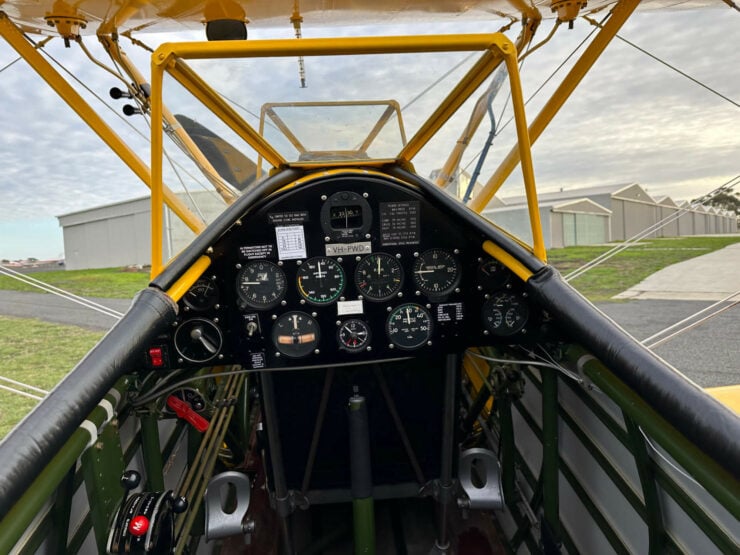

The design of the Stearman Model 75 was the brainchild of the talented aircraft engineer Harold S. “Pappy” Young, who was part of the Stearman Aircraft Company at the time of the Boeing acquisition.
Young incorporated several important features into the design, including a robust steel tube fuselage, a lightweight fabric-covered wooden wing structure, and an open cockpit arrangement with two pilots sitting in tandem – both with their own set of controls.
The #1 American Trainer Aircraft Of WWII
The Boeing Stearman gained immense popularity as a primary training aircraft during one of the most pivotal moments in aviation history – during World War II, the United States Army Air Corps designated the Stearman as the PT-13 Kaydet and the Navy named it the N2S.
The Model 75 became the primary trainer for US military pilots from coast to coast, these newly trained pilots would go on to become fighter and bomber pilots flying sorties across Europe and the Pacific.
Above Image: This is an original WWII-era instructional film about how to fly the Boeing Stearman. It has a running time of 35 minutes, and it does a great job of showing people over the aircraft and how to fly it.
As a result of this, the Boeing Stearman (also known as the Stearman Kaydet) became a ubiquitous sight on military airfields across the United States. Its predictable flight characteristics, reliability, and rugged construction made it an ideal platform for teaching new aviators the essential skills of flying.
In addition to basic flight training, the Stearman was also used for aerobatics, instrument training, and even target towing.
Between 1934 and 1945 a remarkable 8,584 examples of the aircraft would be built, with spare parts produced to complete the equivalent of 2,000+ additional planes.
The Boeing Stearman: Life After WWII
Once the war was over the military suddenly didn’t need the vast majority of the aircraft anymore and as a result they sold them off en masse into civilian hands as military surplus.
There was no shortage of takers. Many military pilots had fond memories of the Stearman as the first aircraft they soloed in, and while P-51 Mustangs and Corsairs might have been faster they were also an order of magnitude more expensive to buy, fuel, and maintain.
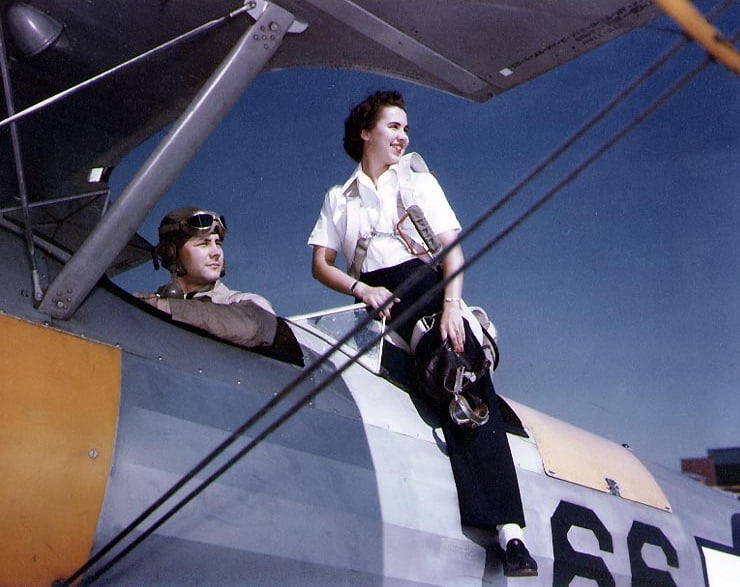

Thousands of Stearmans were bought by civilians, many for leisure but some were also converted for use in crop dusting applications. Others still were used for shows where they would perform acrobatics and wing walkers would thrill the crowds with their daring do.
There are many Stearmans still being flown today, impressive given the the first example flew almost 90 years ago in 1934. A significant number have now been through full restorations, and thanks to the fact that so many of them were made it’s possible to buy them for not a whole lot of money – not a whole lot of money in aviation terms that is.
The 1943 Boeing Stearman Shown Here
As you will have read in the introduction, this aircraft was painstakingly restored in the late 1990s and completed in the year 2000. The owner flew it a total of 61 hours out of Jandakot Airport in Perth, Western Australia before placing it into storage in 2007.
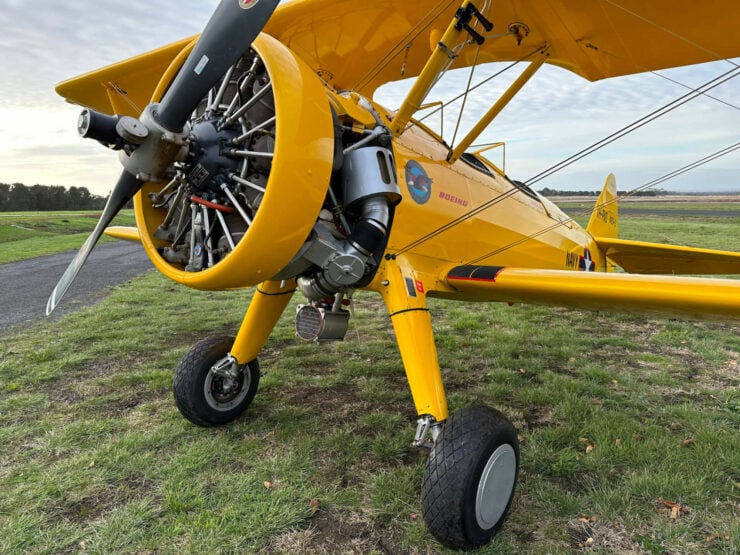

It was taken out of storage and brought back up to airworthiness in 2021, and it’s now completed an additional 28 hours of flight time, and it’s being offered for sale with a total of 89 hours.
When the aircraft was being restored the Pratt & Whitney R985 engine was sent to Superior Aviation in Melbourne, Australia for a rebuild and it’s now showing 89 hours along with the rest of the airframe.
If you’d like to read more about this unusual warbird or enquire about buying it you can visit the listing here on Platinum Fighter Sales. It’s being offered out of Lethbridge in Victoria, Australia.
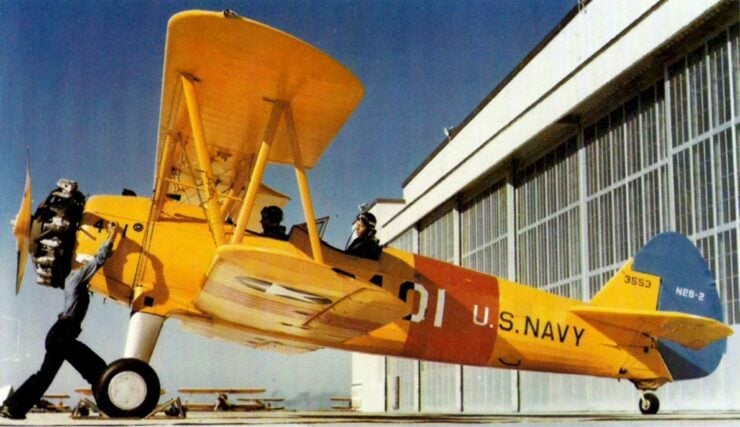

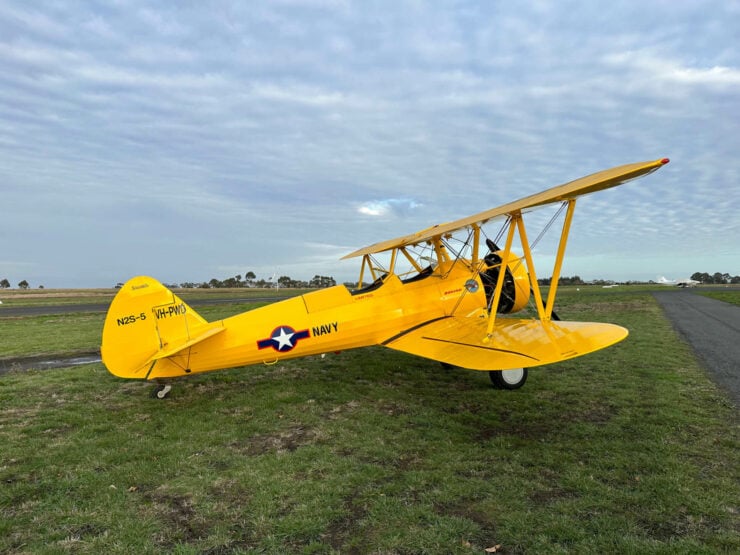
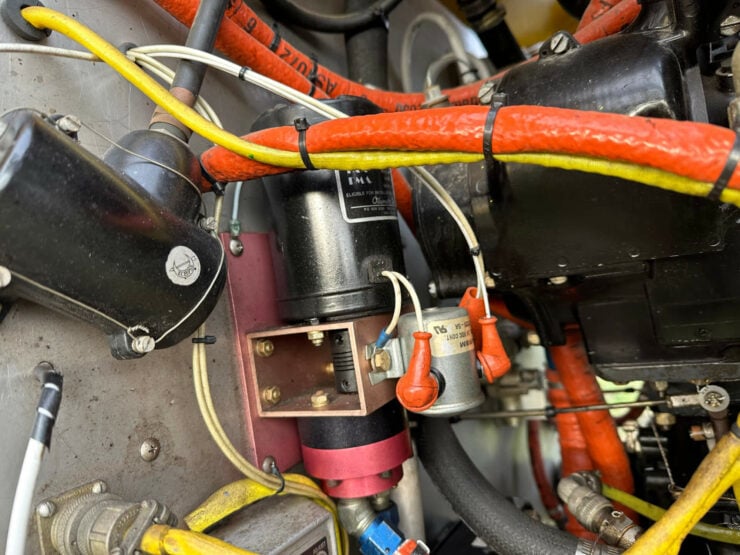
Images courtesy of Platinum Fighter Sales

Articles that Ben has written have been covered on CNN, Popular Mechanics, Smithsonian Magazine, Road & Track Magazine, the official Pinterest blog, the official eBay Motors blog, BuzzFeed, Autoweek Magazine, Wired Magazine, Autoblog, Gear Patrol, Jalopnik, The Verge, and many more.
Silodrome was founded by Ben back in 2010, in the years since the site has grown to become a world leader in the alternative and vintage motoring sector, with well over a million monthly readers from around the world and many hundreds of thousands of followers on social media.

